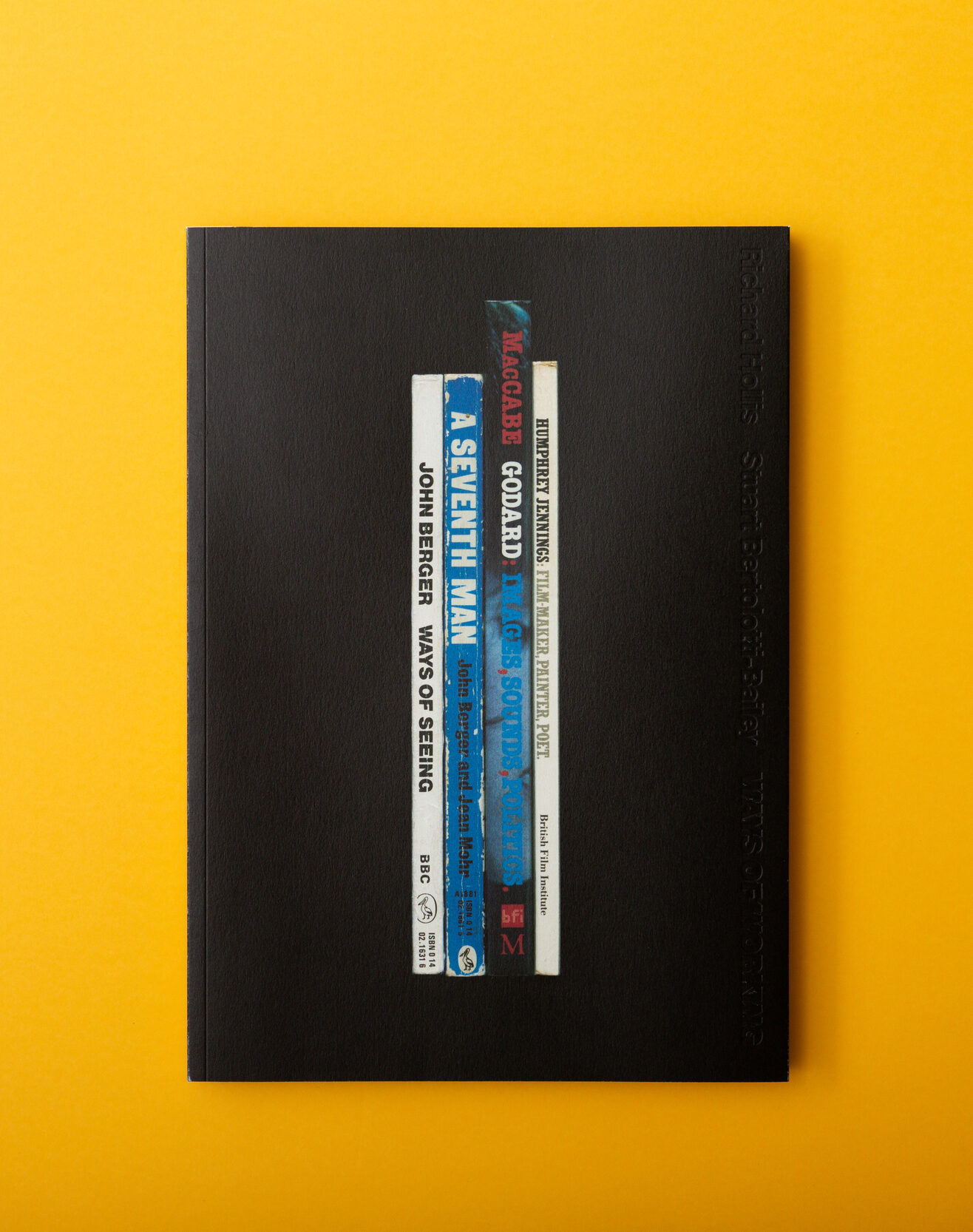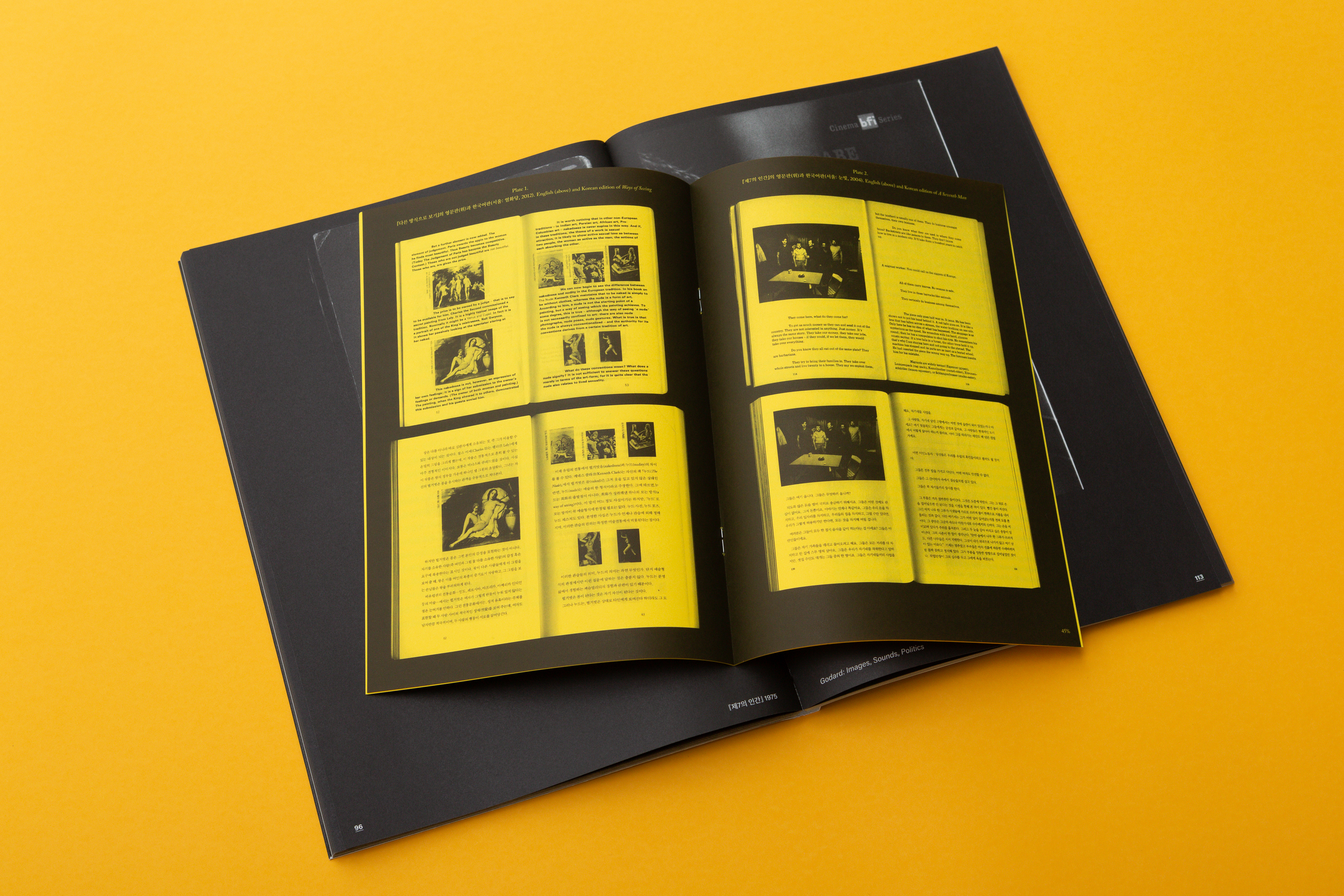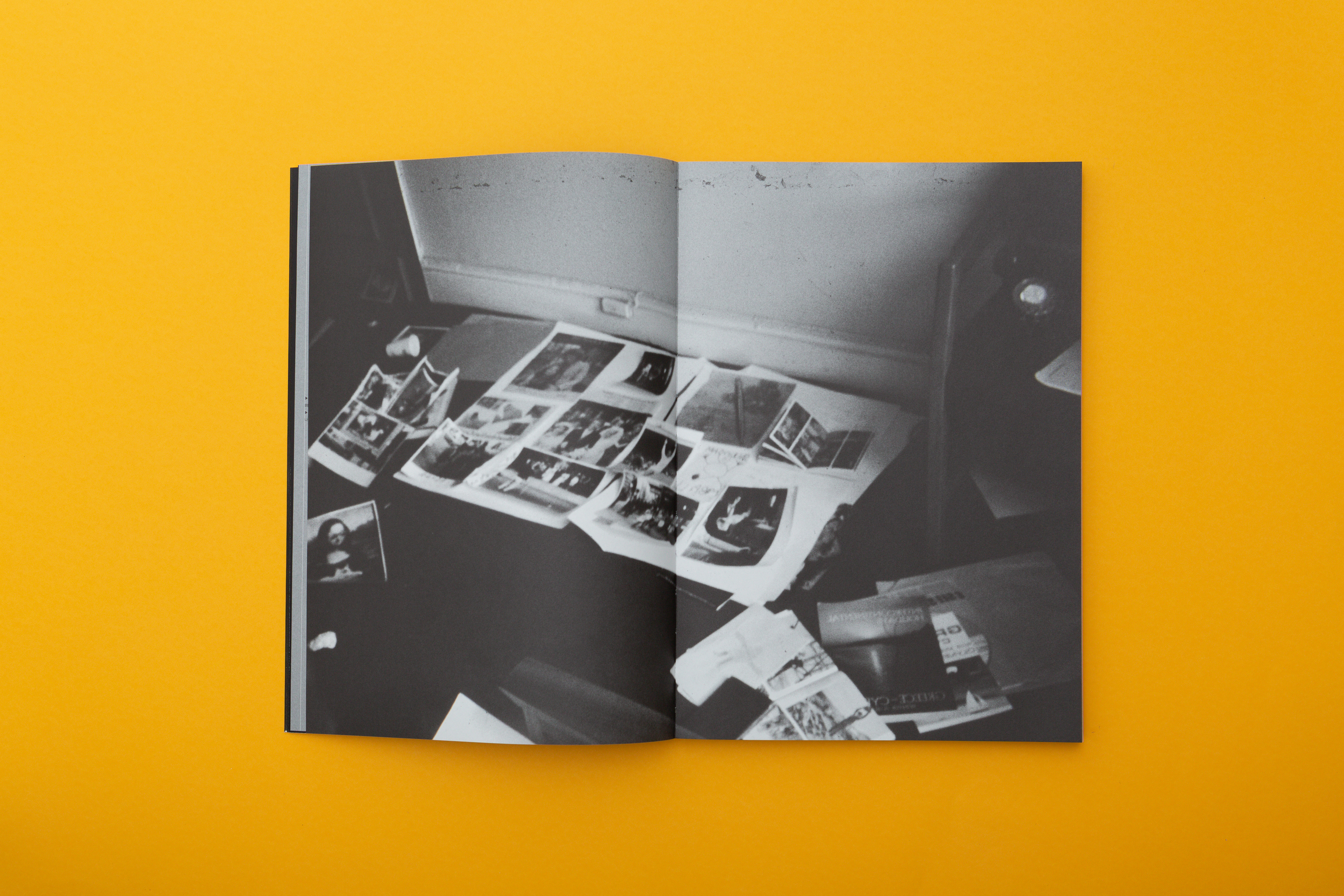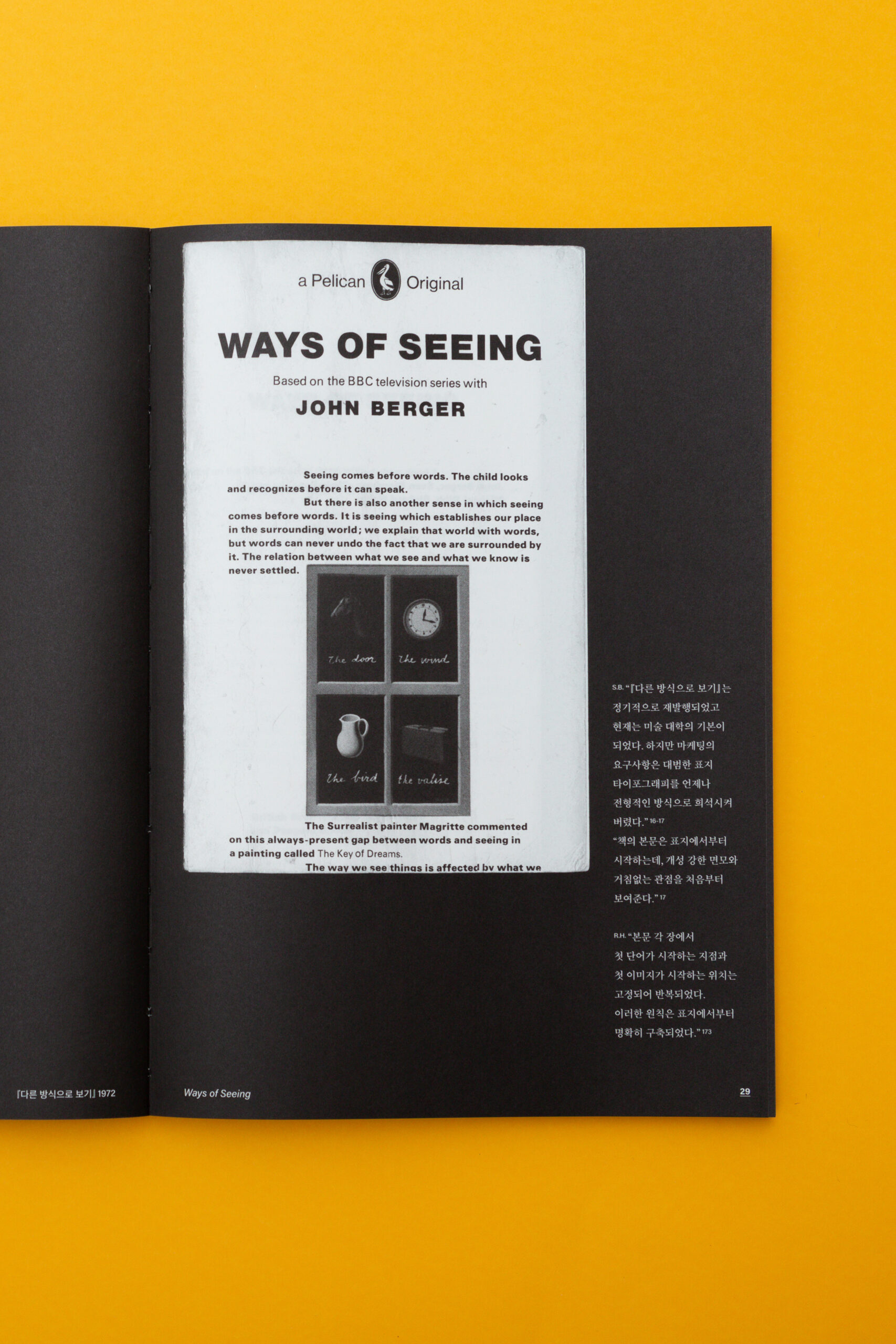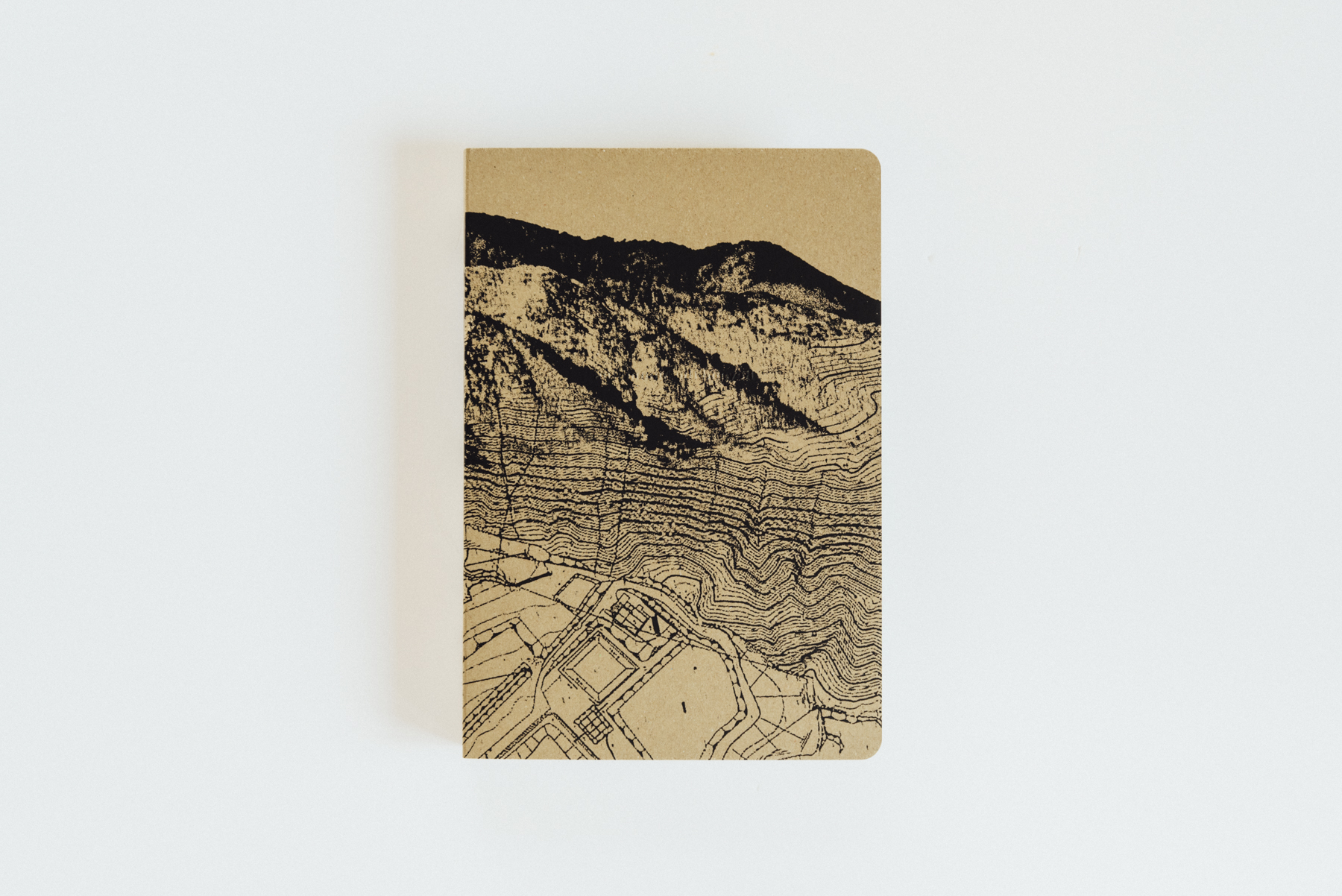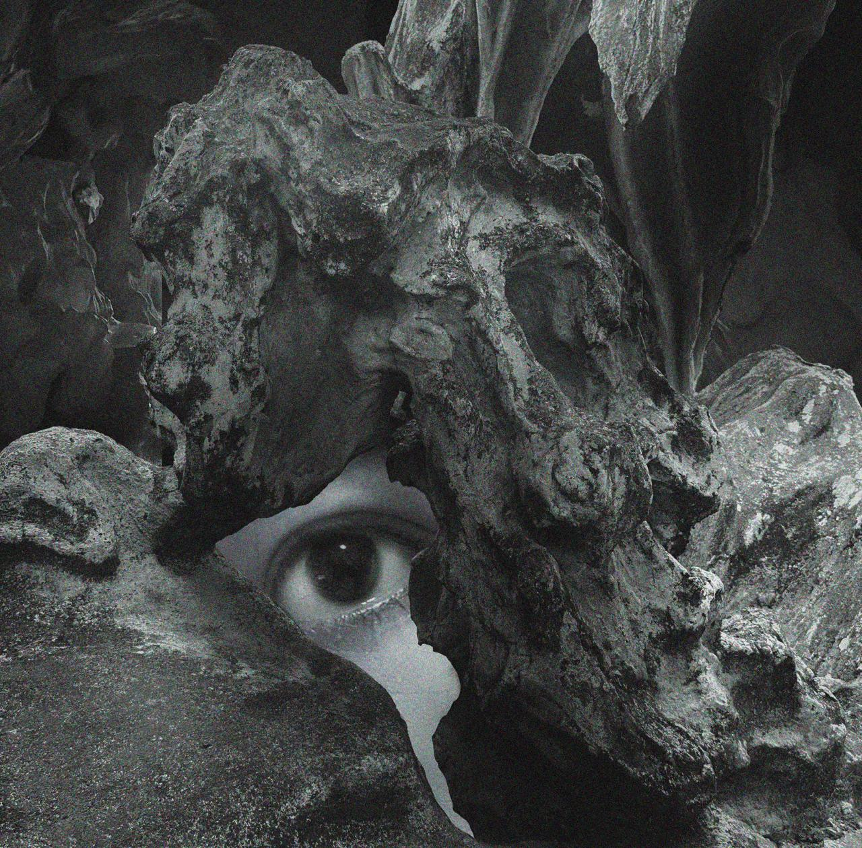This book, titled Ways of Working, starts from an article in the 5th issue of Dot Dot Dot (April 2003). Stuart Bertolotti-Bailey, a British graphic designer, contributed an article to the 5th issue of Dot Dot Dot, in which he participated as a co-publisher and designer. The title was “Way of Working”. It was an introduction to four books designed by British graphic designer and design writer Richard Hollis over a period of 10 years from the 1970s to the 1980s. This essay was a detailed observation of ‘Richard Hollis Book Design’ by a designer who experienced a different time period than Hollis, with a time difference between the era of paste-up work and the era of digital design. This insightful essay is now reproduced in the book Ways of Working compiled with a new essay by Richard Hollis titled “The Audio-visual Page”, where Hollis recalls the four books he designed with the keyword ‘audio-visual’.
The subjects of these two essays are four books designed by Hollis: Ways of Seeing(1972), A Seventh Man(1975), Godard: Image, Sound, Politics(1980) and Humphrey Jennings: Film-maker, Painter, Poet(1982). In the hope that the book under discussion can be fully observed and savored from a design point of view, book spreads were scanned in actual size, except for the book Humphrey Jennings: Filmmaker, Painter, Poet.
In the middle of this book, a stapled 16-page yellow sheet is inserted, which is “Book Design by Richard Hollis through the Lens of Translation” written by Korean book designer Dongshin Kim. As an invitation to the ‘conversation’ between the two previous authors, Kim’s essay gives a ‘third person’s perspective’ comparing the Korean version of Ways of Seeing and The 7th Man with the first English version designed by Hollis and discusses the possibility of ‘translation of book design’.
As Bertolotti-Bailey pointed out, these books are prints from 40 to 50 years ago. However, they are interesting examples of how the image and the text, the two types of information channels, interact with each other in the space called ‘book’. Overall, the topic is still relevant in relation to today’s multimedia digital environment.



